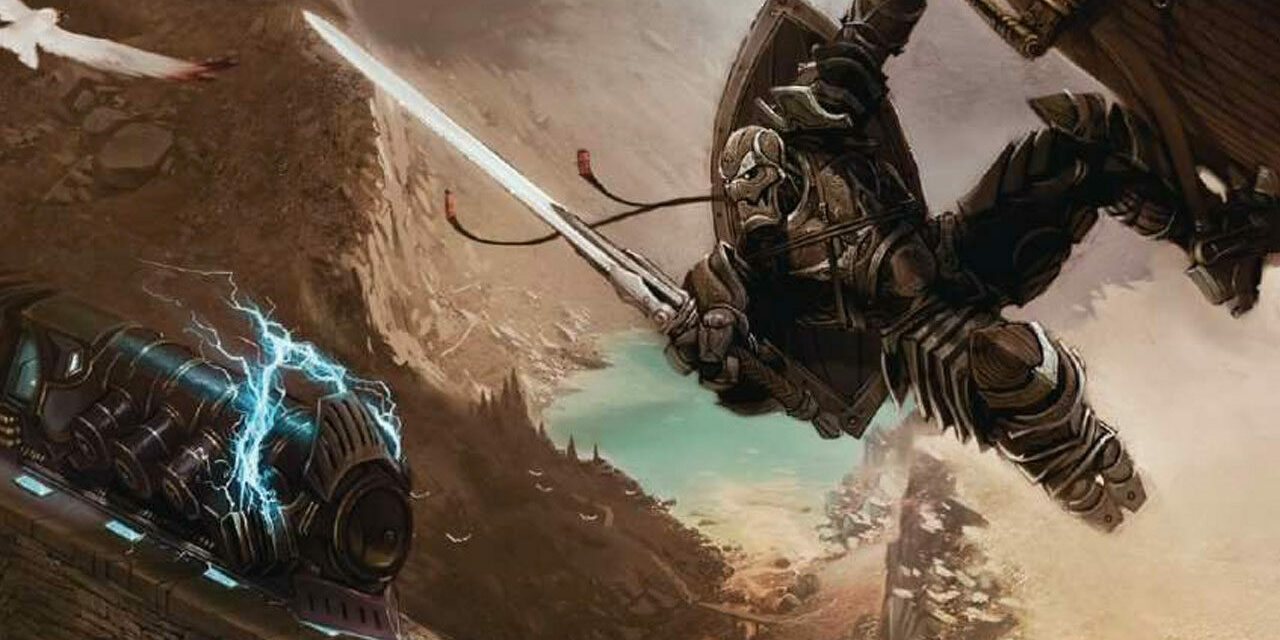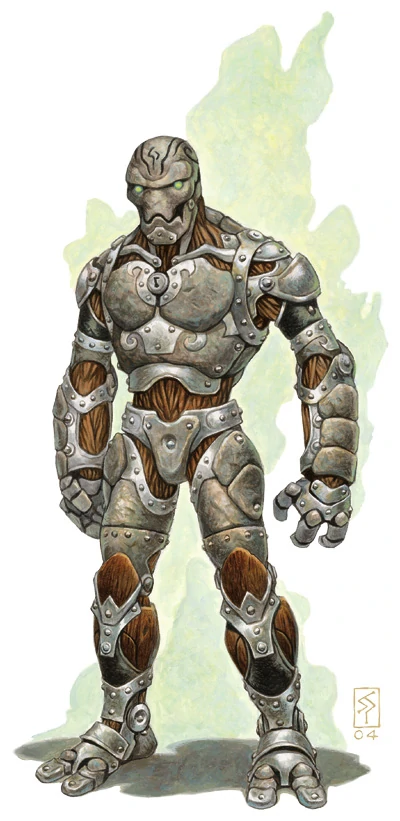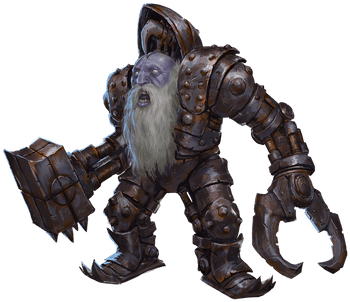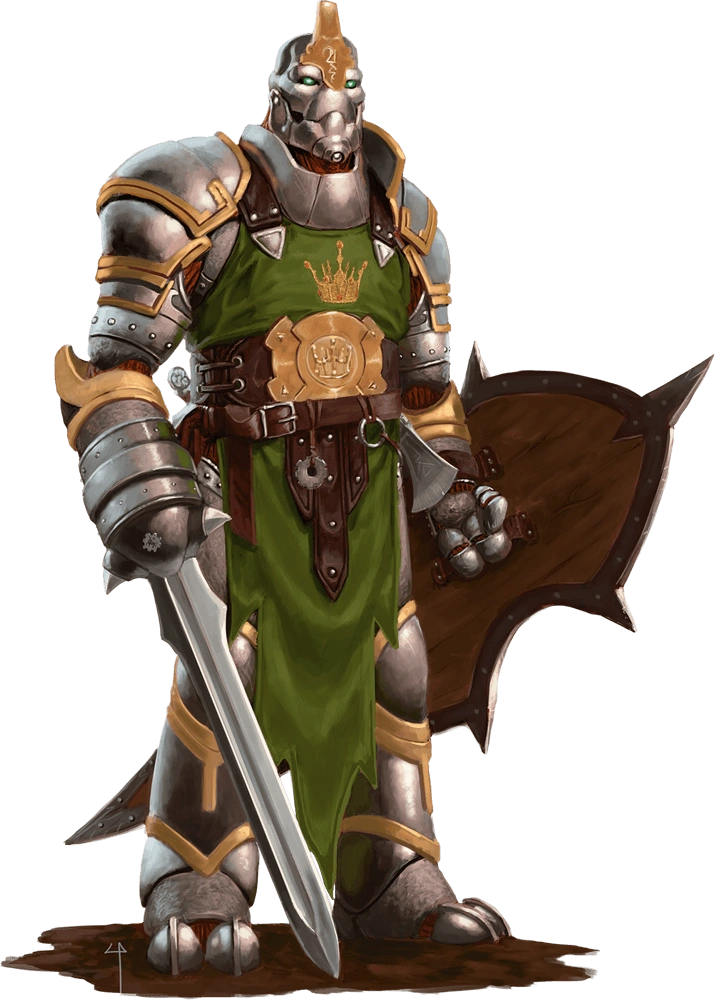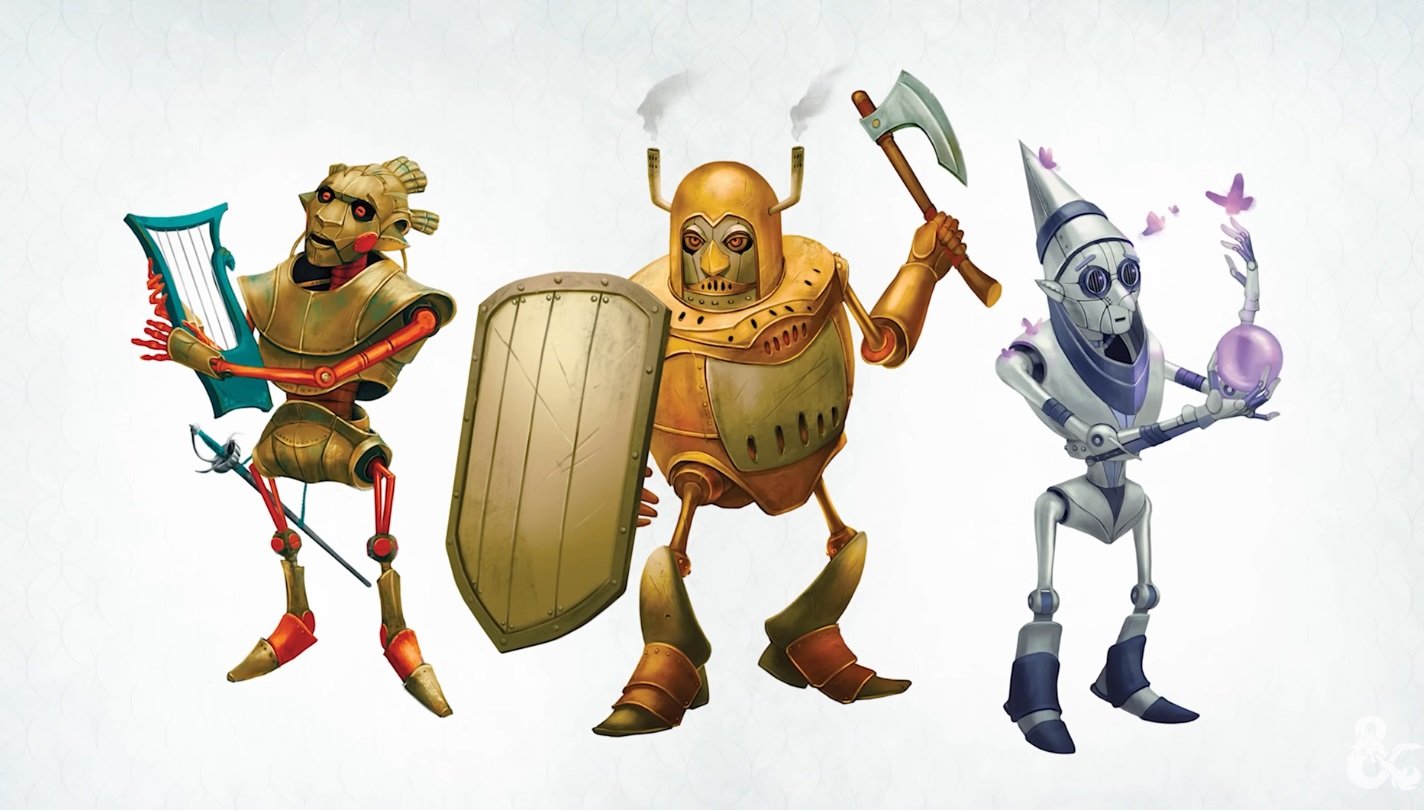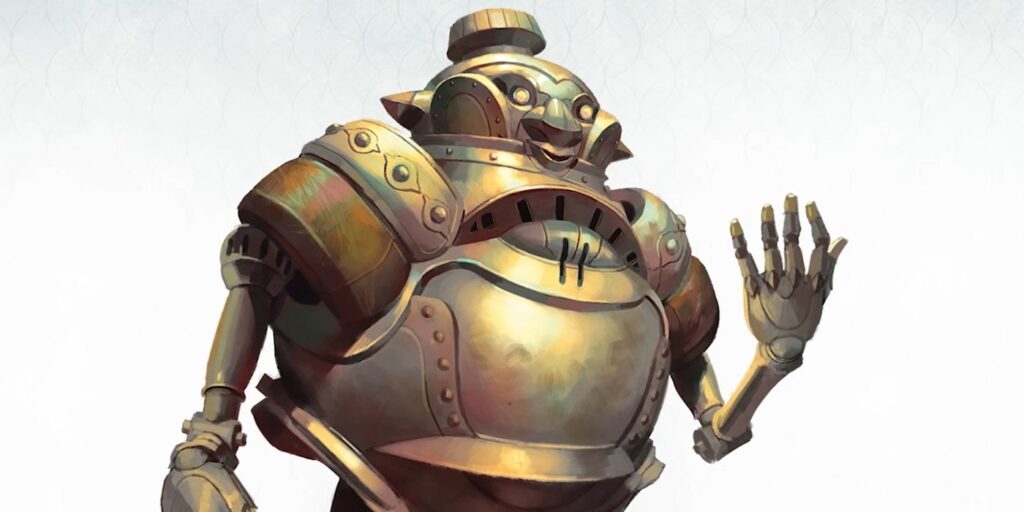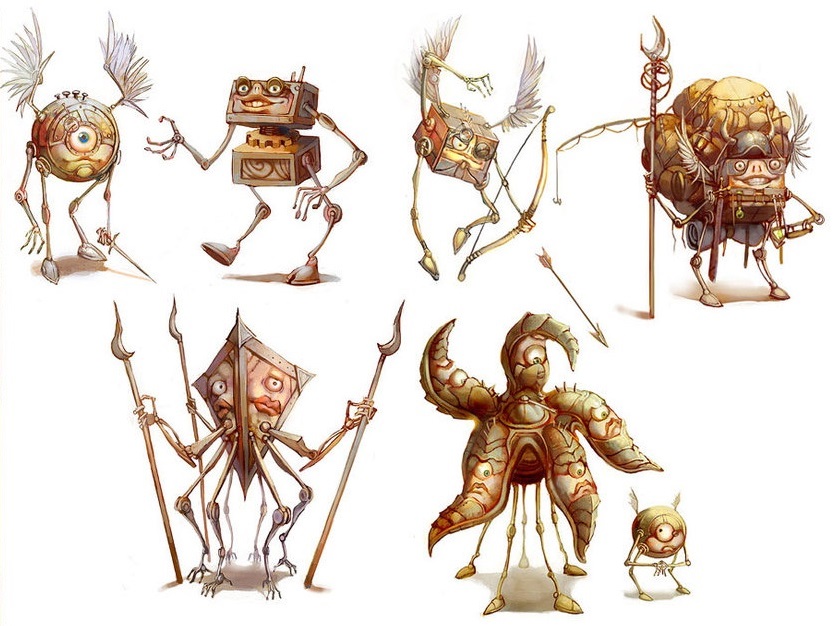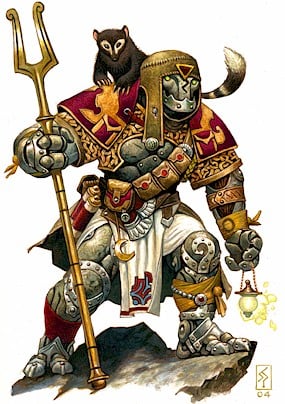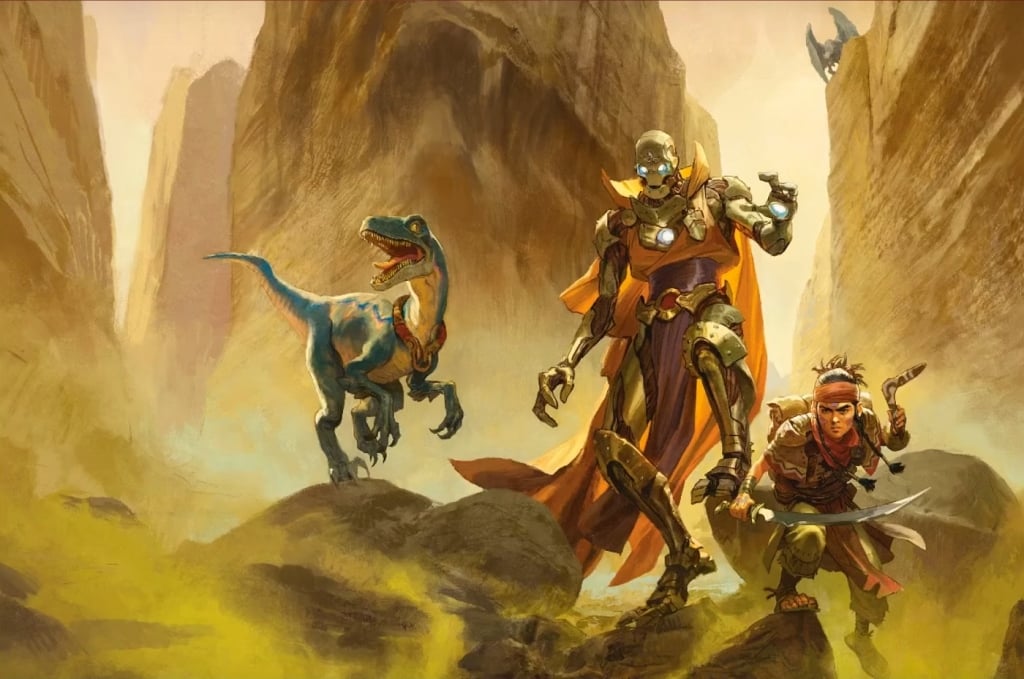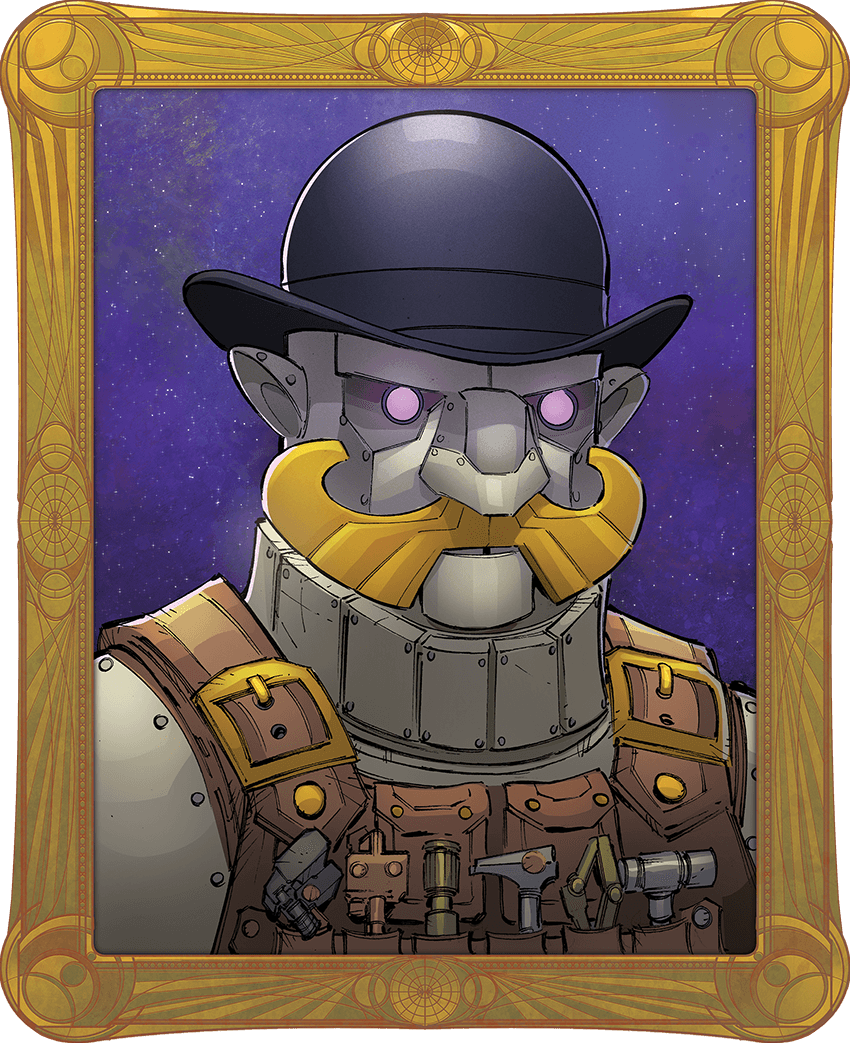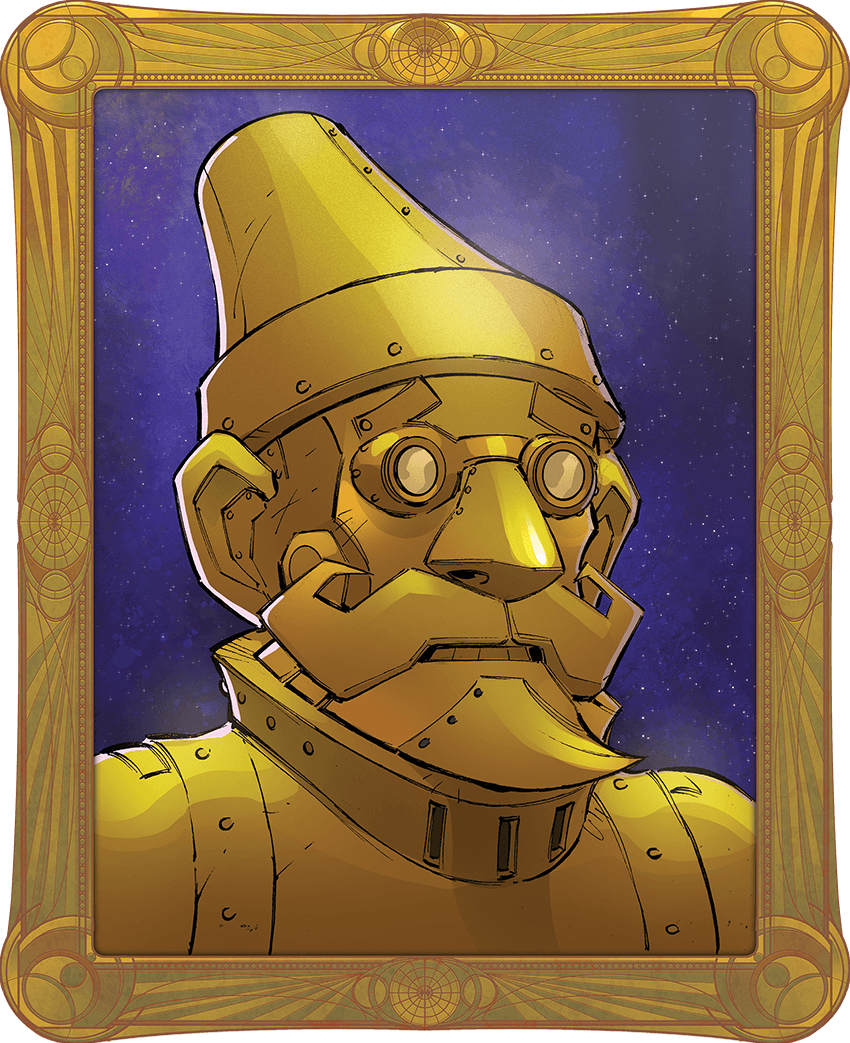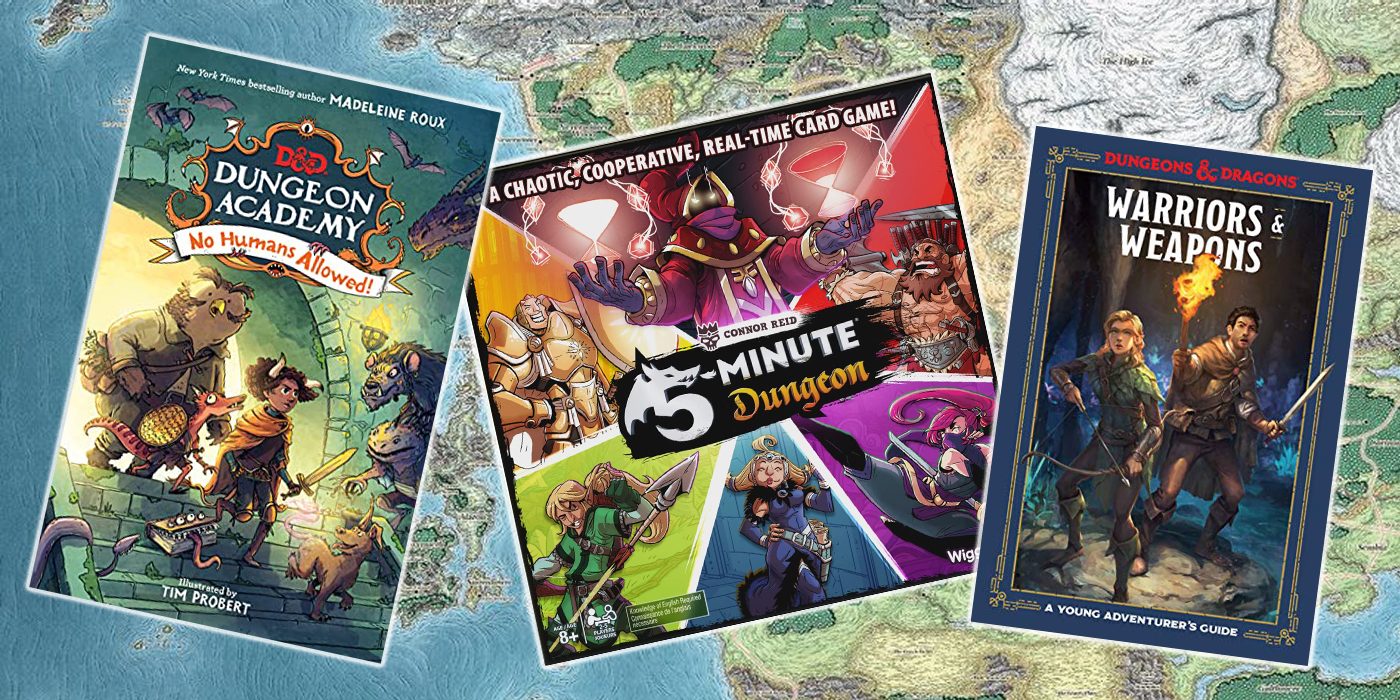Playing a Robot in D&D: Here’s How to Add More Sci-Fi to Your Fantasy
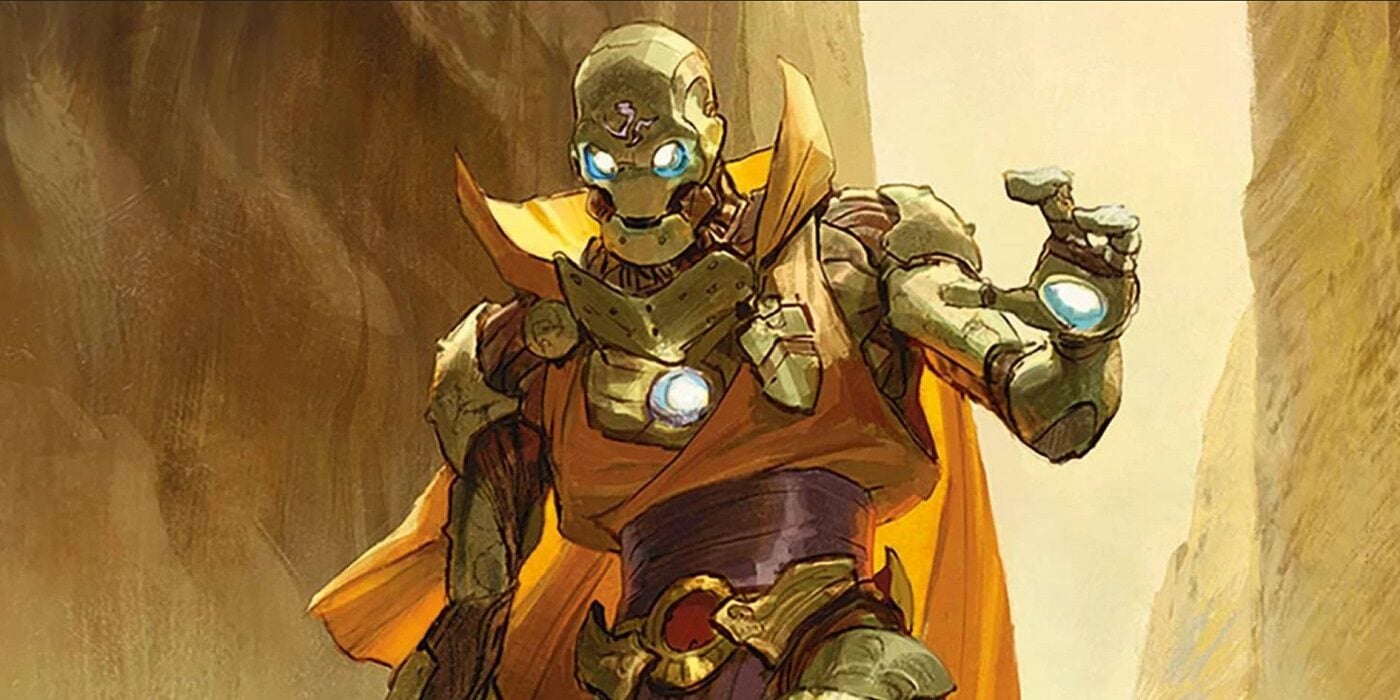
Dungeons & Dragons is a game all about fantasy adventurers with magic swords on quests. Here’s how to play a robot in D&D.
Yes, Dungeons & Dragons is, on the surface, a game all about fantasy. But what does that mean? Genre is only as meaningful as its distinction. And “heroic fantasy adventurers” can come in all sorts of shapes and sizes. Generic European Mediaeval Times is just sort of the boring “mayo-is-too-spicy-for-me” default.
But adding sci-fi to fantasy is a tale as old as time. Even in the most Tolkienesque fantasy, the works of Lord of the Rings author Jolkien Rolkien Rolkien Tolkien himself, do elements of science fiction crash in. Beren One-Hand rose to the heavens in a glass ship atop a pillar of flame.
And if that can be in the Silmarillion, then you absolutely can be a robot in D&D. So grab your Binary Language of Moisture Vaparators -> English dictionary. Because here’s how to play a robot in D&D.
How to play a Robot in D&D – Existential Questions or Solid Mechanics?
First things first, in order to be a robot, you have to understand what a robot is. We all know that a man is a miserable pile of blood and secrets. But robots? That’s something else entirely.
Now it’s a safe bet to assume that if you’re considering playing a robot in D&D you have some pre-set ideas. Robots are synthetic beings, right? Created for some purpose with a sentience of their own.
But in D&D that can be dwarves, if you think about it. Because what are dwarves if not the stone-forged creations of Moradin? If the father of all dwarves breathed into them a love of crafting, is that not the same as being programmed, but with meat instead of metal?
Fortunately, this is D&D. We don’t have to get existential. We can represent what it means to be a robot mechanically. There are rules for being organic and having a meat body, and rules that might center a robot PC’s synthetic nature.
There are three main robotic PC races in D&D:
- Warforged
- Autognomes
- Glitchlings
The latter isn’t officially in D&D yet, but given that we know Planescape is coming, it seems a safe bet that what we see in the Wonders of the Multiverse Unearthed Arcana (where Glitchlings are found) will make the jump to published material sooner rather than later. Each of them has a different approach to being a robot. But by and large, all of them remove the need to eat, drink, breathe, or sleep. Let’s take a look!
Warforged
Warforged are probably the first thing that leaps to mind when you think about Robots and D&D. Introduced in the very first Eberron, Warforged introduced a ton of people to “fantasy robots.” Made of “living steel and stone” every Warforged is a unique creation. They are made with steel, darkwood, stone, and rootlike cords infused with alchemical fluids.
Originally built to fight in a war, these constructed beings were given the freedom to find purpose.
Pick Warforged if you want to play the kind of robot that is searching for a function. They’re the iconic pick for a “synthetic being learning to be organic.”
Mechanically, this is represented by the following:
- Warforged don’t eat, drink, or sleep (and can’t be put to sleep by magic — which implies they can sleep if they choose)
- They have resistance to poison damage and being poisoned
- Immunity to disease
- Armor-plated bodies
- Literally built-in tool proficiency
Autognome
You can be a more artisanal robot, though. For that, you might consider Autognome. Autognomes are mechanical beings built by rock gnomes. Built and programmed.
This is an important distinction because they’re more traditional robots. An Autognome might say “this isn’t in my programming.” Every Autognome is wildly different. While Warforged might share a similar chassis design (they were originally built as weapons of war), Autognomes are built for a variety of purposes according to the whims of their creators.
If you want to play the kind of robot that adventures but is much more mechanical, and sort of celebrates that distinction, Autognome is a great place to start. Mechanically, they’re represented in the following ways:
- Their creature type is a Construct, which means they can’t be affected by spells that target “humanoids” even if they are shaped like a humanoid
- Like Warforged, they don’t eat, drink, breathe, or get sick, and have advantage/resistance to being poisoned/poison damage
- Autognomes do not sleep, but must be inactive and motionless if otherwise conscious
- Only a certain number of healing spells can affect them, but so can the mending spell
Glitchling
Introduced in the Wonders of the Multiverse Unearthed Arcana, Glitchlings are robotic beings created by forces of planar law. If you want to be a magic robot, then this is the way to go.
Glitchlings are given rudimentary personalities but are all about absorbing information and experiences and developing as they go. If you want to play a robot that holds up a mirror to humanity/organic life and all its foibles, then misinterpreting it through the lens of a Glitchling is probably the way to do it.
Like Warforged and Autognomes, they too have rules that make them stand out from organic life:
- They have reinforced armor plating for skin
- The ability to always balance the chaos of the world makes them able to deliver machine-like precision
- Like Autognomes, they can only be healed by certain spells
- They do, however, seem to need to eat, drink, and breathe.
Picking the Right Class
Now that you’ve figured out what kind of robot you want to be, how do you actually do it? The right class will take you a long way. Now, before we get into it, I should mention, any class can be a robot. Because you can justify anything, and there’s not a single class that won’t be fun.
That said, a few options stand out without needing too much work:
Sorcerer – After all, what is programming but an arcane language written in eldritch symbols that requires the right components to work? The Clockwork Soul Sorcerer is a natural fit. You can take a page from the artificer’s handbook and flavor your spells as things you do with your magic robot technology. Instead of waving your hands to cast scorching ray, maybe a flamethrower emerges from a hidden panel on an arm, etc.
Artificer – You don’t have to be an artificer to be a robot, but blend magic and technology in the same ways your character already is. Any of them works, but the Armorer and Artillerist feel like natural fits.
Warlock – Look Eldritch Blast is basically already a laser. And there’s no way Ruby comes from anything other than an Infernal Warlock Patron. Scrums are just the part of the bargain that sealed the deal.
Fighter – From Johnny Five to Futurama’s knife-wielding Roberto, we all know robots can fight. Battle Master makes for an excellent choice as you can flavor your maneuvers as enhanced combat protocols. Rune Knight too, since it gives you an in-combat transformation.
Rogue – Assassin droids are common in Star Wars, of course, they’re a good fit for D&D too.
How to play a Robot in D&D – But Why Though?
But there are plenty of other tools at your disposal beyond just “pick one of the character races that is a robot.” The deathless nature of the Reborn is a great way to play someone who’s a bit robotic but with flesh. It all comes back to what you want to do when playing a robot.
There are lots of reasons one might want to play a robot in D&D. Among the many you might:
- Want to explore what it means to be human
- Robots make us ask questions about who we are, what we do, and what that says about us
- Robots are also decidedly not human, so they can explore outside of the bounds of “is a human”
- Be an exaggerated mirror
- Just like how robots say something about us, they can talk about human behavior – we do silly things daily, and a robot is a perfect excuse to ask why? “You just put that in your mouth and mash it up and down?”
- Have cool robot powers
- Look D&D or RPGs, in general, are all about living cool lives that we’d never get to otherwise, and having robot powers is way up there
- Do cool robot things
And they’re all valid. But it’s important to keep in mind what you want to explore with your character. Once you do, you can start roleplaying like a robot.
How to Roleplay a Robot in D&D
Now that you’ve picked the perfect PC race, it’s time to make your robot into a character. You can start by looking at what questions you want to ask, as a robot. We’ve mentioned some above. Then just find ways to ask them in character.
Maybe your Warforged was built to be a scout originally, and now they’re looking for their own purpose. You can ask things, either literally, or better yet, with actions. Look at Bastion, from Overwatch.
Bastion was built as a gun turret tank soldier but found purpose in the woods. You can have your robot PC ask questions with their curiosity about the world. Maybe you befriend animals. Maybe you try to mimic human behavior to mixed results. But curiosity is a great drive for a robot.
On the opposite end of the robot spectrum, you have Bender, Bending Rodriguez, who does cool robot things and can’t do many other things. Like being a folk singer.
But he has fun playing within the constraints of his programming. Playing a robot can be a great way to act up in certain scenes. You can decide that something is or isn’t part of your programming, and let that guide your behavior and choices.
Being a robot gives you an interesting viewpoint, and from there, you can do what you like.
Even little things like catchphrases can help ground your character in who they are. We’ve talked about this in developing a character voice. You could just as easily throw in a little bit of a verbal reminder to folks that you’re playing a robot. Saying “well that doesn’t compute” works whether you’re saying it like a Speak & Spell or saying it like Bender might say “kill all humans.” You just want to find opportunities to explore the niche you’ve carved for yourself outside of “being human.”
Which we all definitely are, and know how to do. So, no need for any follow-up questions about that, right fellow humans? Hah.
01001000 01100001 01110000 01110000 01111001 00100000 01000001 01100100 01110110 01100101 01101110 01110100 01110101 01110010 01101001 01101110 01100111!

